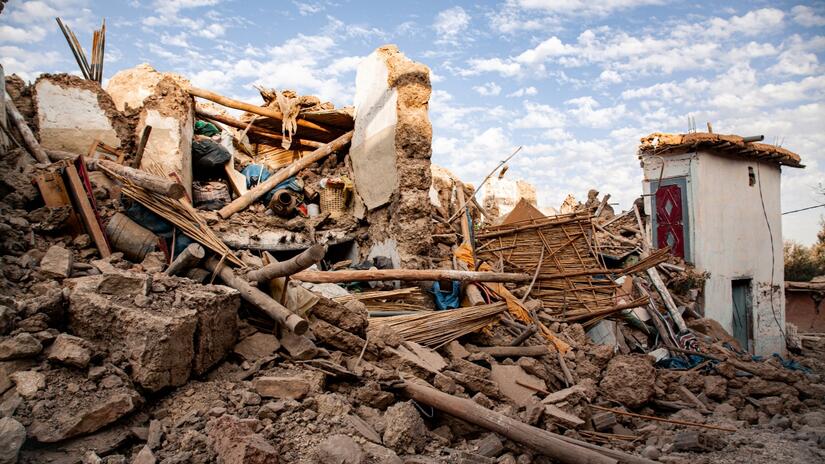Should the U.S. be Doing More to Help?
By Hale McGivern ’25
On September 8th, an earthquake with a magnitude of 6.8 struck the Al Haouz Province in Morocco. Several buildings collapsed, and most that didn’t now suffer from severe structural damage. While the death toll was first thought to be just over 800, new information shows roughly 2,900 people died, and 5,600 people were injured. This natural disaster has led to an increase in homelessness by tens of thousands of people and a need for food, water, shelter, and other basic necessities for many more. Morocco needs the world’s help now more than ever, and it is imperative that nations provide whatever aid they can. Given the scale of the earthquake and American precedent in similar situations, current U.S. economic assistance provided to Morocco is insufficient. The U.S. must instead provide commensurate economic aid to the disaster’s proportion.
Shortly after the earthquake first hit Morocco, the United States Agency for International Development (USAID) sent a small team to evaluate what action was needed, and the result was underwhelming. With this research, the US government has offered up to 1 million dollars from USAID to go towards humanitarian causes, which include food, shelter, physical assistance, and mental aid. Morocco has received much greater amounts from other countries of similar economic status as the United States, such as an initial $5.4 million dollars from France alone.
To put this number into perspective, the U.S. government has given a total of $5.6 billion dollars to the Haitian government upon their request since their earthquake in 2010. At the time of the 6.8-magnitude 2010 earthquake in Haiti, Haiti was one of the least developed countries in the world; thus, the U.S. decided to use its resources to help. Initially, the U.S. government gave $75.5 million to Haiti to help aid in their recovery. Over a decade after the earthquake, between 2021 and 2023, the U.S. provided $172 million in life-saving humanitarian assistance and an additional $105 million in developmental and health-related aid.
Similarly to the situation in Haiti, Anthony Bliken, the U.S. secretary of state, said: “immediately after the earthquake hit, the United States and other countries jumped in [to help].” The earthquake in question was the Turkey and Syria one that hit just a few months previous to the Morocco earthquake. This earthquake had a magnitude of 7.8. In comparison to Morocco’s $1 million, Turkey and Syria received a total compensation of roughly $200 million after requesting aid from foreign powers from the U.S. State Department, USAID, and U.S. Emergency Refugee and Migration Assistance Funds. With a death toll of 46,000 people, there is no denying that this earthquake had a major effect on those living in Turkey and Syria, but how is it that the difference in funding for Haiti, Turkey, Syria, and Morocco is so stark?The U.S. government is clearly able to help, so it has an obligation to do so. The assistance given to Morocco is underwhelming compared to the aid afforded to Haiti, Turkey, and Syria for their earthquakes. The US government has said they are ready to provide more assistance if requested by the Moroccan government; however, how can Morocco ask for more money, especially a large sum, if they are only initially being given $1 million dollars? The US should follow its reputation as a leader in the world and as a charitable nation. It is already incredibly hard to ask for any money because of nationalistic pride. However, when very little is offered to begin with, it makes pushing past this pride and asking for more even harder.



